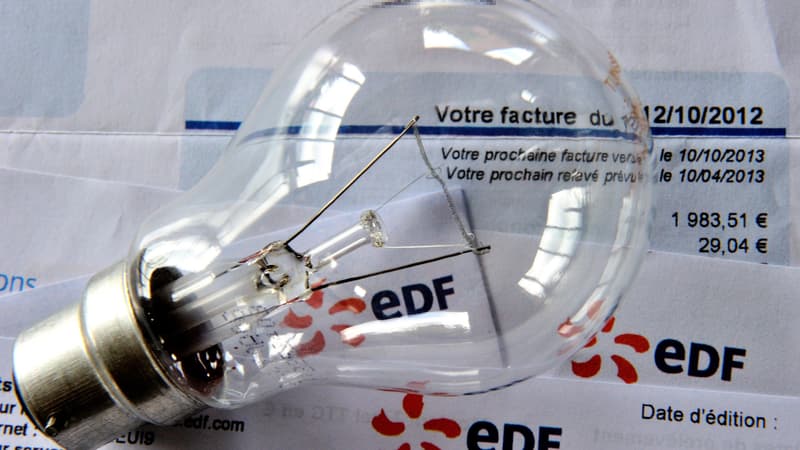“For twenty years, energy prices have not changed and in the space of two years…” It is difficult for Sylvain Moreau not to insist on the exceptional nature of the inflationary phenomenon affecting electricity prices since 2021. The director of business statistics of INSEE presented this Wednesday the results of its first survey on the expected evolution of electricity prices in 2023 together with Nicolas Studer, head of the Production Price Indices division. Between mid-December and mid-January, INSEE asked electricity providers to declare the average prices and volumes of electricity delivered by sector and by power segment for the years 2021, 2022 and 2023.
It shows that the increase in electricity sales prices will accelerate in 2023, particularly for professional customers who will face an average increase of 84% compared to 2022. This increase will be much more contained for households, since they should around 16% thanks to the new tariff shield threshold that limits the increase in regulated sales tariffs (TRV) to 15% as of today. “Households benefit from a more protected market than professional clients,” says INSEE. Already between 2021 and 2022, electricity prices had only risen by 5% for individuals versus 21% for businesses.
An inflationary trend that goes back two years
Several succinct or even simultaneous events contributed to driving this increase in electricity prices. In 2021, the economic recovery came first at the end of the Covid-19 pandemic that caused “a sharp increase in demand for raw materials and energy, in particular electricity, and therefore increased its lessons.” In addition, “the closure of the nuclear reactors and the tensions around the Nord Stream 2 gas pipeline have caused a drop in electricity supply, especially in France”, which has pushed up market prices. place and eventually
Thus, in February 2022, the government established a tariff shield to limit the TRV increase to 4% and from which a third of the professional sites that had signed a power contract of less than 36 kVA could benefit. A device that almost coincided with the start of the war in Ukraine, a conflict that once again caused a sharp rise in electricity prices: +488.7% for electricity sold wholesale on the EPEC (Bourse European Electricity) spot market. Spot) in March 2022 YoY -yr.
An insufficiently mitigated price increase in 2022
“The Arenh explains the lower growth of French prices compared to its European neighbours”, underlines Nicolas Studer. And not in vain, the increase in the share of regulated access to historical nuclear energy gave rise to refunds on the invoices of professional clients, which limited the increase of the latter. But at the end of the summer, French prices were hit by the shutdown of many nuclear reactors, pessimistic forecasts for a restart next winter and fears over gas supplies, while Russian deliveries fell sharply. The result: a 563.9% year-on-year increase in wholesale electricity prices in the EPEC spot market in August 2022.
It wasn’t until autumn that the trend was reversed with a drop in wholesale market prices made possible by particularly mild temperatures in France. It should be noted, however, that these same courses maintained a high standard. “Starting in November 2022, spot prices return to their 2021 level, but prices in the spot and futures markets remain more than double (+126.9%) than those registered a year earlier, due to the high prices of futures contracts contracted in the summer,” says INSEE. “Many companies have concluded their contracts at the highest level for fear that prices will continue to rise,” said the head of the producer price indices division .
Increases that vary according to the sector of activity and the subscribed power
Although between 2021 and 2022 it was around 21%, the increase in sales prices to professional clients should quadruple between 2022 and 2023. Based on the contracts signed for next year, this figure is likely to increase and evolve in the event of renegotiation and does not take into account the effects of the different government measures: the electric shock absorber, the ceiling for VSE and the help desk for the payment of gas and electricity bills.
On the other hand, the data highlights differences in the degree of exposure of professional customers to the rise in electricity prices. Thus, the increase would be more pronounced in industry and agriculture (+92% in 2023) than in the tertiary (+77%) and non-market (+66%) sectors, the latter corresponding in particular to local entities.
Therefore, the size of the companies also influences: “The increase would be 80% for customers who have a low voltage high power contract (segment C4, between 36 and 250 kVA) and 38% for those who have a higher low power (C5, less than or equal to 36 kVA).” According to INSEE projections, it is the prices of the C4 segment that will become the highest in 2023, surpassing those of the C5 segment which are partly subject to the regulated rate.
Source: BFM TV


